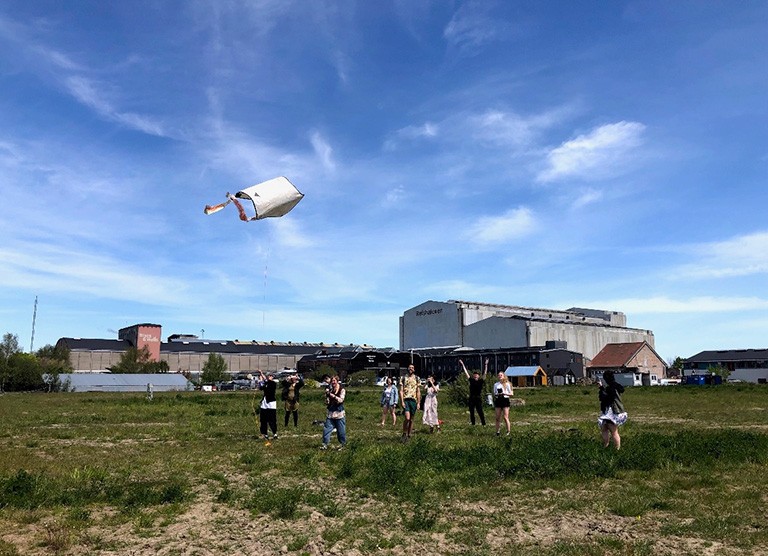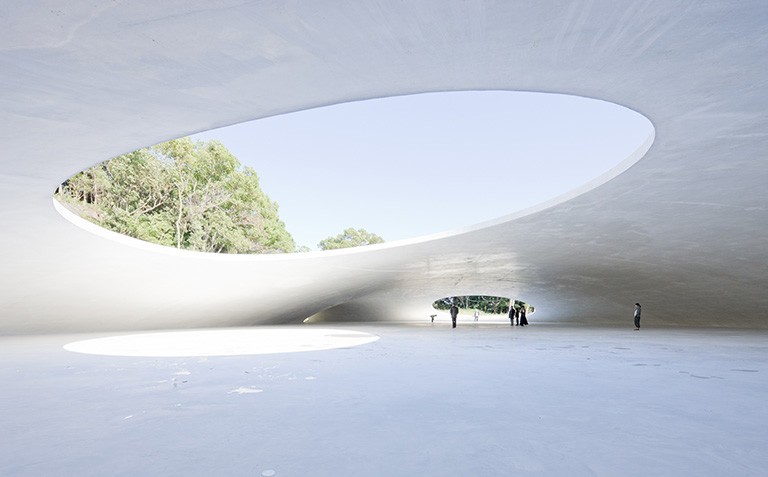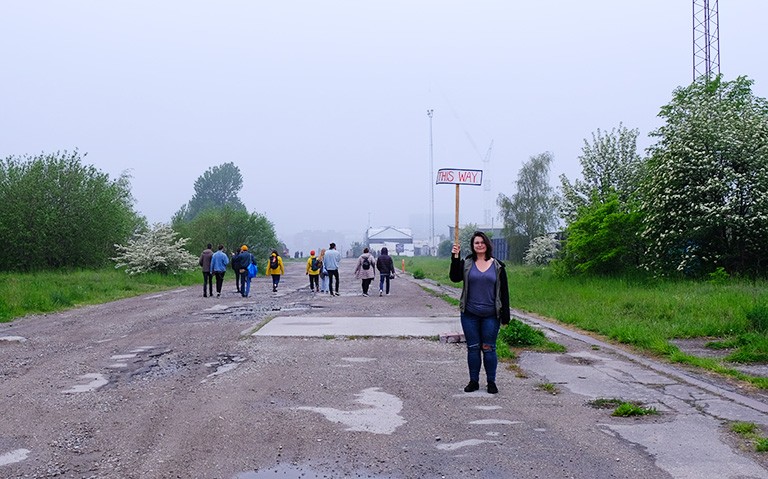Concordia's Summer Field Schools offer hands-on experiential learning
 Fine Arts student Paule Gilbert made a kite with her fellow trip mates in Teaterøen, Copenhagen.
Fine Arts student Paule Gilbert made a kite with her fellow trip mates in Teaterøen, Copenhagen.
Looking for a new perspective on your studies and the opportunity to work with students from other departments? Spend some time in another country through a summer field school!
Concordia International’s Field Schools give students the opportunity to visit another country for hands-on experiential learning led by Concordia faculty. Students in the programs, which last anywhere between 10 days and six weeks also earn credits toward their degrees.
Two students who took part in 2019 summer field schools shared what they learned and most enjoyed about their experiences.
Learning from Minimalism in Japan
Beatriz Wolanski Brito, a master’s student in design, spent 17 days at the Make in Japan Short-term Design Field School last May.
The field school is led by Guillaume Pelletier, a visiting scholar in the Department of Design and Computational Arts. It gives students the opportunity to learn about Japanese design, architecture, fashion, art, game design and more, through visits to museums, galleries and architectural sites in multiple cities across the country.
Participants also have the opportunity to do a project exchange with students from the Tama Art University in Tokyo.
“We got pretty immersed, going to several places in Tokyo and looking at how the city is organized,” Wolanski Brito says.
 An architectural project by Ryue Nishizawa at the Teshima Art Museum in Japan.
An architectural project by Ryue Nishizawa at the Teshima Art Museum in Japan.
The students also visited Kamakura, Kyoto and the island of Teshima in southwest Japan. Wolanski Brito says her favourite part of the trip was going to the Teshima Art Museum on the island, which hosts a single piece of artwork — an architectural project by Ryue Nishizawa. “It’s a summary of all things Japan and how different their culture and art philosophy is.”
Wolanski Brito, who is working on illustrations for a history of Quebec textbook, says she was inspired by the Japanese approach to art and design.
“It’s very meditative and very minimalist. As a designer, there’s that anxiety of putting as much information as possible in the work, whereas their art and their design leaves something to the imagination. It makes the public reflect upon the art rather than providing all the answers.”
Her advice for someone considering a field school? Take the chance.
“It’s an interesting way of getting out of your own project and practice and experiencing a new environment.”
 Paule Gilbert: “It was very stimulating to be beside people who were working and thinking differently.”
Paule Gilbert: “It was very stimulating to be beside people who were working and thinking differently.”
Getting site-specific in Copenhagen
Paule Gilbert, a Master of Fine Arts candidate in the Studio Arts, Fibres and Material Practices concentration, participated in the Urban Scenographies Field School in Copenhagen last May.
Shauna Janssen, assistant professor in the Department of Theatre and the Concordia University Research Chair in Performative Urbanism, led the program. It was attended by 12 students from the departments of Theatre, Studio Arts, Design and Computation Arts, and Geography, Planning and Environment.
Participants stayed at Teaterøen, or Theatre Island, located on Refshaleøen, a de-industrialized man-made island across the harbour from Copenhagen.
During the 17-day trip, they engaged in performative mapping and undertook assignments that responded to the rapidly changing environment of the island. They also got to explore the city.
Gilbert says the program gave her the opportunity to further develop her ability to work site-specifically. At Teaterøen, she made a kite and got her fellow trip mates to map themselves onto it before they flew the kite over the site “to have it reflecting upon itself.” She also captured scenes around Copenhagen and incorporated the images into her drawings.
Gilbert says she appreciated the opportunity to work with people from other disciplines.
“When we were guided to look at something, we all had very different ways of doing so — not only in the response, but even our frame of analysis was different,” she says. “I think we learned from each other, and it was very stimulating to be beside people who were working and thinking differently.”
After her field school program concluded, Gilbert came away with new skills to use in her own artistic practice. While she was in Copenhagen, she says, she didn’t have all the resources she usually needs for her work.
“That forced me to develop a way of combining different mediums that I had never thought of before and that I’m still working on now,” she explains, such as inserting media into her drawings.
The group also created a book to document their time at Teaterøen, which launched at Concordia’s 4TH SPACE in November.
Want to travel and learn abroad this summer? Find out more about the Field School Program from Concordia International today! Applications close on March 1. Please note: the application deadline for Imagining Iceland has already passed.




